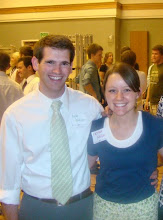I finally found one time of the day that isn’t boiling hot…
5:00 a.m. That’s when I had to get up to accompany one of our partner
organizations out into the field to have a look at some of their programs with
the “ultra poor.” It turned out to be a beautiful day, despite the early start
and the fact that the heat had returned by eight o’clock.
“Ultra poor” is a phrase used by an organization called SKS,
an organization we may work with this summer. The phrase refers to a state of
poverty that is at the peak of destitution – when families are impoverished in
every kind of way. For instance, the ultra poor that SKS focuses on are women
who have been abandoned or have lost their husbands, have no education, no
property, no jobs, no social support or family support, and less than 1$ a day
of income (made mostly from selling themselves as day laborers to do any type
of work available). The also live in rural India – the most rural part of
India. We left for the outskirts of Madek district at 5:00 a.m. because it took
over three and a half hours to get out to this small village.
Despite being labeled “ultra poor,” these women are still “ultra
inspiring.” Our first encounter with them was at their weekly team meeting
where they come and record their progress. It was amazing to see what was
happening. SKS takes a couple months to teach basic principles of financial
literacy. From that point on, the women are given means of livelihood (this
group had been given goats to raise and sell, other women choose tailoring or
other skill sets they feel best suits their circumstances). They meet in a
group once a week to report how many rupees they’ve saved that week and to
receive additional trainings. They also come with a handful of rice every week
to deposit into their group “rice bank.” Then, any time one of them experiences
some crisis, she can draw on that rice bank rather than starve. In only eight
months’ time these woman had nearly filled a large tin bucket with rice.
To report their
progress, the women maintain a financial ledger, both personally and as a
community. We saw in their own handwriting how they reported their savings and
expenditures. We also saw how at the beginning of the community ledger all they
could do each week was leave a thumb print on the line that represented their
contribution. Then, after flipping through a number of pages, some of the lines
started showing scraggly signatures instead of thumb prints. When we’d flipped
to the final page, every line had a well-practiced signature.
After this meeting, we were blessed to be invited into the
homes of two of these women. The first was an aging woman who lived on her own.
We walked through the village past a number of sound-looking dwellings,
expecting at any time to come across her house. When we did, I must admit I did
a double take. Compared to the brick and mortar houses around, her little straw-thatched
home tucked between established houses looked like nothing more than an
abandoned shed. Yet, she had maintained it and loved it, and it was indeed her
home. We’d seen the homes of others struggling in India before. This was
something different. Inside, there was nothing. No possessions. No light. Only
her and her dedicated determination to push on. Our partner, Dr. Divakar, said,
“You are in the home of one of the poorest women in all of India.”
We asked her about her story, and also her dreams for the
future. She was alone. Her daughter and son-in-law had left and were living in
Hyderabad, but never sent any support. She had lost her husband years before.
She had nowhere to go. But she looked forward to improvement and peace in the
years to come.
The next home we visited was very similar, but with a new story and new struggles. This woman’s husband had committed suicide a couple years ago. Now, she
was working as a day laborer trying to help her three children get through
school. Her two daughters were there, and we got a few shy smiles out of them.
They were beautiful young girls, and this family is hoping to get all of them into
higher schooling.
The rest of the day was rather administrative – learning about
SKS and its history and programs. Apparently, “Swayam Krishi Sangam" means “self-help group” in Sanskrit.
An appropriate title. These women are really pulling themselves forward on
their own, helping each other and helping themselves. Throughout the day, the
feeling these women left never dimmed. It’s humbling to think as I sit here in our comfortable flat, hours away from their village, that they are still out there, struggling, smiling, working, hoping, and trying to improve their condition. They are always out there, though rarely seen. They
were there before we came, and will be there when we go back home. It’s not that
I hadn’t studied poverty, and didn’t “know” that wonderful people just like me are
living a very different life than I am all around the world. It’s just a new
feeling to be able to put a face and a story to the statistics and lectures. When
I wake up each day, wondering what I’ll be up to, they’re waking up and facing
the day just like me.
 |
| Here's Brook, who accompanied me, with the SKS group |
Certain social problems cannot be overcome in six or twelve
weeks’ time. Hopefully we can leave something for them that will help those
dreams before we return home.







No comments:
Post a Comment